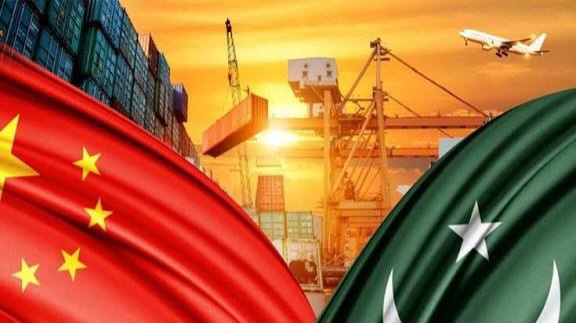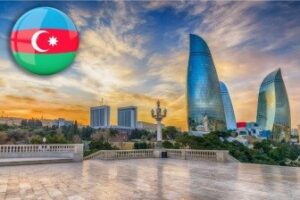CPEC and Emerging Dimensions of Party Politics

In the twenty-first century, politics is being redefined by action, delivery, and community empowerment rather than empty slogans and entrenched dynasties. The era when traditional political parties in the Global South could sustain themselves on rhetoric alone is fading fast. Citizens, particularly youth, are demanding dignity, participation, and tangible improvements in education, health, and livelihoods. This demand is reshaping political competition: legitimacy now comes not from grand promises but from visible service and community alignment. In Pakistan, Pakistan Awami Quwat (PAQ), led by Khaqan Waheed Khawaja, is carving a distinct political space that mirrors this shift. Its vision, rooted in functional, service-based, and community-driven politics, resonates with the governance philosophy of the Communist Party of China (CPC) while remaining firmly grounded in Pakistan’s socio-political fabric.
CPEC, as the flagship project of China’s Belt and Road Initiative (BRI), has transformed Pakistan’s infrastructure, energy capacity, and regional connectivity. But beyond highways, power plants, and special economic zones, its deeper political meaning lies in how parties interpret and translate such mega-projects into policies that reach ordinary people. Many traditional parties treat CPEC as a bargaining chip in elite power struggles, leveraging its narrative for electoral gains without embedding it in community structures. PAQ, however, views CPEC as a springboard for a people-centered development model. Its strategy integrates CPEC into local communities through resource development centers, grassroots parliaments, and data-driven policy frameworks that emphasize education, skills, and health as engines of emancipation and dignity. The core of PAQ’s ideology rests on the principle that politics must serve people. Its slogan, “People First”, is not ornamental but institutionalized into practice. Unlike dynastic parties that remain trapped in cycles of inheritance and patronage, PAQ builds from the ground up. Street parliaments, block codes, ward units, and Union Council (UC) parliaments form the foundation of decision-making. Standing committees at the UC level deliberate on practical issues such as water, sanitation, education, and health. These feed into tehsil, district, and provincial structures, eventually linking with the national organization and overseas forums. This bottom-up system ensures that every neighborhood has a voice and that political participation is not confined to the election cycle but embedded in everyday governance.
In this way, PAQ resembles the CPC’s organizational model, where local committees and grassroots branches serve as the backbone of governance. But PAQ’s adaptation to Pakistan emphasizes inclusivity and diversity. Women, youth, and marginalized groups are not treated as symbolic participants but central actors in shaping local and national policies. To sustain this inclusivity, PAQ has developed study circles, political schools, and leadership academies at multiple levels. These are not merely ideological classrooms; they are training platforms where young leaders learn to assess community needs, design responsive policies, and monitor development outcomes. Such systematic training ensures that political leadership is prepared, not improvised. What makes PAQ’s functional approach distinctive is its commitment to data-driven governance. Each UC is equipped with a resource development center responsible for gathering and analyzing socio-economic and demographic data. These centers map natural resources, water availability, employment patterns, and health indicators. This localized knowledge is integrated into national strategies, including CPEC projects. For instance, if an industrial zone is planned in a district, PAQ ensures that vocational training centers are established simultaneously, preparing local youth to seize new employment opportunities. This prevents the disconnection that often arises when mega-projects are imposed without community alignment. In a century dominated by artificial intelligence, big data, and digital governance, PAQ’s insistence on grassroots data collection positions it as a forward-looking political force.
Community service is another pillar of PAQ’s legitimacy. Its politics are not about symbolic rallies or media spectacles but about delivering daily services. Neighborhood sanitation committees, local health initiatives, educational support programs, and skills development drives make politics tangible for citizens. This approach revives the long-neglected spirit of social responsibility, reminding people that politics should not merely be about electoral competition but about everyday welfare. Where other parties cling to slogans such as “Roti, Kapra aur Makan” or “Naya Pakistan”, PAQ focuses on accessible schools, functional clinics, vocational programs, and sustainable livelihoods.This service driven politics is directly linked to CPEC and broader BRI initiatives. The infrastructure financed through Chinese investment provides the backbone for growth, but its true potential is realized only when it uplifts communities. PAQ’s political agenda ensures that global initiatives such as China’s Global Development Initiative (GDI), Global Civilization Initiative (GCI), and Global Security Initiative (GSI) are localized into actionable community programs. Poverty alleviation, gender equality, and sustainable growth are not abstract policy goals but embedded into UC-level plans. For example, PAQ’s women’s wings at the grassroots level link international discourses on gender empowerment with local realities, launching vocational programs and ensuring women’s participation in community parliaments.
Compared to other political parties in Pakistan, PAQ’s model demonstrates coherence between vision and action. The PML-N has historically prioritized infrastructure but often without ensuring equitable distribution of benefits. The PPP, while rooted in populist traditions, struggles with entrenched patronage networks. PTI successfully mobilized youth but faltered in institutionalizing governance, relying excessively on centralized charisma. In contrast, PAQ offers a system where governance, politics, and development are inseparable. Community voices directly feed into policy-making, while leadership training guarantees continuity and sustainability. The urgency of PAQ’s model becomes clear when viewed against Pakistan’s development indicators. Literacy hovers slightly above 60 percent; nearly 40 percent of the population faces multidimensional poverty; youth unemployment remains alarmingly high. Health outcomes are similarly bleak, with maternal mortality at 154 per 100,000 live births and child malnutrition exceeding 40 percent in some regions. Traditional politics has failed to meaningfully address these structural deficiencies. PAQ’s grassroots service delivery, integrated with CPEC and global initiatives, offers practical solutions rather than empty rhetoric.
PAQ also recognizes that political survival in the twenty-first century depends on mastering technology and skills. Its political schools, leadership academies, and vocational centers reflect a deep understanding that the future belongs to societies that prepare their youth for AI-driven economies. Just as the CPC’s long-term planning has propelled China to global leadership in digital infrastructure and technology, PAQ understands that Pakistan’s path to survival and prosperity hinges on investments in education, data, and innovation. By embedding these priorities into its organizational fabric, PAQ avoids the short-termism that cripples many parties in the Global South.
What sets PAQ apart is its synthesis of ideology and functionality. Ideologically, it promotes dignity, emancipation, and meaningful participation of the lower and middle classes. Functionally, it creates the mechanisms like UC committees, study circles, data centers, political schools that translate ideology into daily governance. This dual emphasis ensures that politics does not collapse into slogans but is realized through measurable actions. It embodies the principle that in modern politics, credibility arises from delivery, not rhetoric. The broader lesson of PAQ’s rise is highly relevant to political parties across the Global South. Disillusioned youth are demanding alternatives to dynastic politics and elite capture. By combining CPC-inspired discipline and grassroots adaptability, PAQ provides a model of reimagined politics. It demonstrates that mega-projects like BRI only achieve their transformative potential when local communities are actively engaged through functional political systems.
As the twenty-first century unfolds, marked by AI, technology, and unprecedented connectivity, parties that remain confined to dynasties and populist slogans will fade into irrelevance. Those that embrace functional governance, grassroots empowerment, and service oriented ideology will lead the way. For Pakistan, PAQ stands as a rare example of such a vision. It shows that politics can once again be about people, dignity, and sustainable progress. The lesson drawn from China’s CPC is simple yet profound, “development is political, and politics must be development”.


